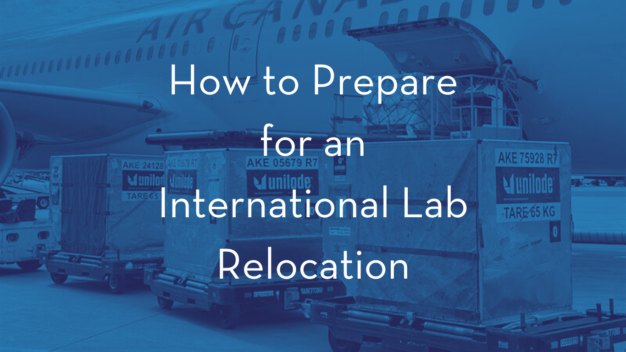How To Prepare For An Lab Relocation : International Edition

International lab relocations can be a daunting process. With so many moving parts involved, it's essential to have a solid plan in place to ensure a smooth and successful move. In this laboratory relocation guide, we'll walk you through the steps to prepare for an international lab relocation.
Step 1: Find an International Relocation Service Provider
First, start by finding a service provider who can help you with the move. Look for a company with experience in international lab relocations. They should be able to guide you through the entire process and avoid potential pitfalls.
Step 2: Create a Laboratory Relocation Plan
Work with your provider to develop a comprehensive plan. This plan should detail every aspect of the move. This includes timelines for each phase, responsibilities to team members, and a complete inventory of all items that will relocate. Also, outline communication strategies to ensure all stakeholders stay involved throughout the relocation process. A well-crafted plan is essential for coordinating efforts and minimizing downtime or disruptions to research activities.
Step 3: Create a Commercial Invoice
Next, create a commercial invoice with detailed information about the shipment, including a brief description, the value and country of origin of each item. It's essential to ensure that the information on the invoice is accurate to avoid any delays in customs clearance.
Step 4: Book International Freight
The next step is to book international freight for your lab equipment. This could include air or ocean freight. Your service provider should be able to help you find the best rates and shipping options for your specific needs. Additionally, your service provider will organize a team of trained technicians to appropriately pack and prepare your items for shipping. Once the goods are ready for shipping the provider will organize delivery to the appropriate airport terminal / sea port.
Step 5: Customs Clearance
Once your lab equipment arrives at its destination, it will need to go through customs clearance. Your service provider should be able to handle this process for you. They will submit all necessary paperwork and collaborate with the broker to clear the shipment.
Step 6: Release from Cargo Terminal
After customs clearance, the terminal will release your shipment from cargo. Your service provider should provide any charges that require payment to secure the release of your shipment. These fees may include: terminal handling fees, duties and taxes, or VAT.
Step 7: Delivery
Finally, your service provider should arrange for a team of trained technicians to deliver the shipment to your agreed upon location. These technicians will place all items in your desired location and remove any debris if requested.
FAQs: Steps in the Lab Relocation Process
What are the key steps in preparing for a successful laboratory relocation?
Understand the comprehensive steps involved in international lab relocation, including finding a service provider, booking freight, and handling customs clearance.
How should lab management approach the relocation of sensitive equipment and hazardous materials?
Special considerations are necessary for managing the move of sensitive equipment and hazardous materials, emphasizing safety and compliance.
What role does a move team play in ensuring a successful lab move?
The move team is crucial for planning, coordinating, and executing various aspects of the relocation project, ensuring minimal downtime and risk.
What is the importance of a chain of custody during a laboratory move?
Maintaining a chain of custody ensures that all equipment and materials are accounted for and remain secure throughout the move process.
How can one manage the logistics of moving equipment and materials internationally?
Key logistics include proper documentation, customs clearance, safe packing, and transportation arrangements for all lab contents.
What are the best practices for a post-move setup to resume operations quickly?
Best practices involve careful planning of the layout, efficient unpacking and setup of lab equipment, and thorough testing before resuming full operations.
Conclusion
In conclusion, with the right service provider and a solid plan, an international lab relocation can be a successful process. Follow these steps to ensure a smooth move. Explore seamless international lab relocation services tailored to the unique needs of your scientific endeavors in the United Kingdom, China, and the vibrant cities of Calgary & Edmonton, ensuring a smooth transition for your research facilities across diverse global landscapes. Contact us to learn more.
